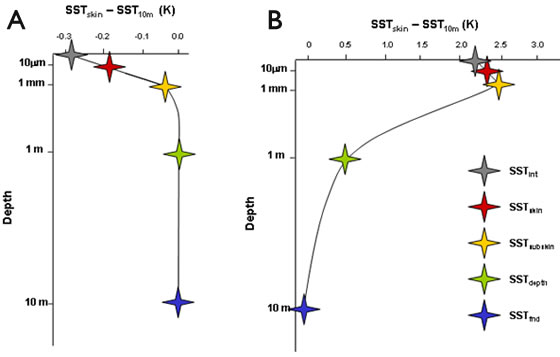Near-surface temperature
Sea surface temperature (SST) has a governing role in air-sea interactions. For example, SST is a key trigger of tropical cyclones.
Satellites measure SST within the top few millimeters. However, the is a ‘skin’ across the ocean surface and its temperature can diverge by up to 0.5 °C from that of the bulk SST, which is measured in situ across the top few metres.
Conventional Argo floats pump ambient water past a sensor that measures temperature and salinity. To protect the integrity of the salinity sensor the pump mechanism shuts off around 4 – 5 m below the surface. Since 2008, over 300 newly developed near surface temperature (NST) floats have been deployed, which continue to take temperature and pressure measurements above this depth as the thermometer is independent of the pump system.
Argo NST data can improve current research in thermocline development and diurnal variability in near surface warming. A recent study using Argo NST data showed good correlation to satellite data and revealed that the diurnal warming in the mixed layer could span from 0.1 – 8 m below the surface (Quinn, 2011).

Schematic diagram showing a vertical temperature profile through the ocean surface layer during (A) night time and (B) day time with solar heating.